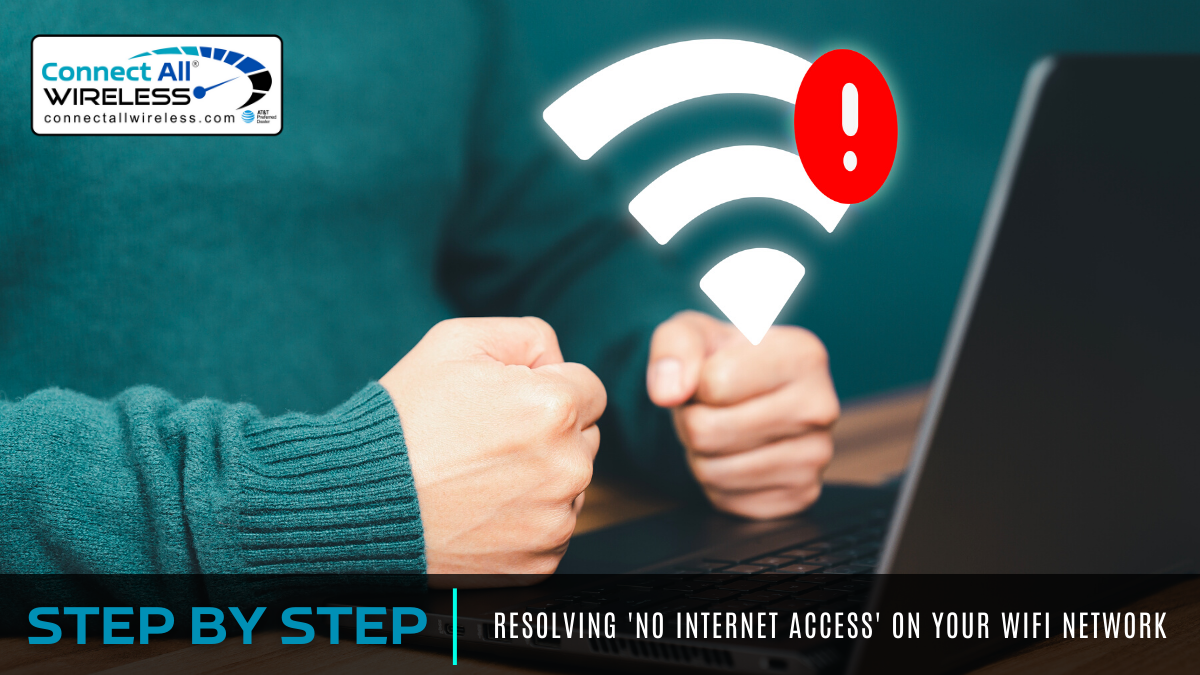
In today's digitally connected world, a reliable WiFi connection is essential. However, encountering the frustrating 'No Internet Access' problem can disrupt your online activities. This guide aims to help you diagnose and resolve this issue step-by-step, ensuring a seamless and stable WiFi experience.
Understanding the Problem
When your device displays 'No Internet Access' despite being connected to WiFi, it indicates a connectivity issue between your device and the internet. It can stem from various factors:
- Router Configuration: Incorrect router settings or misconfiguration.
- Device Settings: Issues with your device's settings or network adapter.
- Network Interference: Signal interference or network congestion.
- ISP Problems: Service interruptions from your Internet Service Provider (ISP).
- Hardware Malfunctions: Faulty router, modem, or network adapter.
Step 1: Basic Troubleshooting
-
Restart Your Devices: Begin by restarting your router, modem, and device experiencing the issue. Often, a simple reboot resolves temporary glitches.
-
Check Other Devices: Verify if other devices connected to the same network are experiencing similar issues. If they are, it indicates a router or ISP problem.
Step 2: Verify WiFi Connectivity
-
Check WiFi Signal Strength: Ensure your device is within the router's range and the signal strength is adequate. Signal boosters or relocating the router might help.
-
Connectivity Test: Access other websites or online services to determine if the issue is specific to certain websites or across the entire internet.
Step 3: Router and Device Configuration
-
Router Settings Check: Access your router's admin panel through a web browser. Ensure DHCP settings are enabled, and the firmware is updated to the latest version.
-
Device Network Settings: Check your device's network settings. Ensure that DHCP is enabled and that it's obtaining an IP address automatically.
Step 4: Troubleshoot Network Adapter
-
Restart Network Adapter: Disable and re-enable your device's WiFi adapter. Sometimes, this simple action can re-establish the connection.
-
Update Network Drivers: Ensure your device's network drivers are up-to-date. Visit the manufacturer's website for the latest drivers.
Step 5: Resolve ISP or Hardware Issues
-
Contact ISP: If the issue persists, contact your ISP to inquire about service disruptions or any known issues in your area.
-
Check Hardware Components: Inspect cables, connectors, and the router's physical condition. Consider resetting the router to its factory settings if necessary.
Step 6: Advanced Troubleshooting
-
Use Command Prompt (Windows): Utilize commands like "ipconfig /release" followed by "ipconfig /renew" to refresh your device's IP configuration.
-
DNS Settings: Try changing your device's DNS server settings to public DNS servers like Google DNS or OpenDNS.
Step 7: Seek Professional Assistance
If the issue persists despite following these steps, seeking professional assistance from a technician or your ISP's technical support team might be necessary. They can perform advanced diagnostics and identify underlying issues that require specialized expertise.
Conclusion
In summary, addressing the 'No Internet Access' dilemma on your WiFi network demands a systematic approach. By following the step-by-step guide outlined above, you empower yourself to navigate through potential router misconfigurations, device settings discrepancies, and external factors impacting connectivity. It's crucial to recognize the significance of a reliable WiFi connection, especially in regions like Michigan where staying connected is vital. For the best WiFi in Michigan, a proactive approach to troubleshooting is key.
Whether it's rebooting devices, verifying router settings, or seeking assistance from your ISP, persistence pays off. Embracing advanced troubleshooting measures, such as using command prompts and adjusting DNS settings, ensures a comprehensive strategy. Patience is a virtue in resolving network issues, and with these steps, you're on the path to enjoying the best WiFi experience Michigan has to offer. Remember, a stable internet connection is not just a convenience; it's an integral part of daily life, and by mastering the art of troubleshooting, you can ensure seamless connectivity for all your online endeavors.

No comments yet